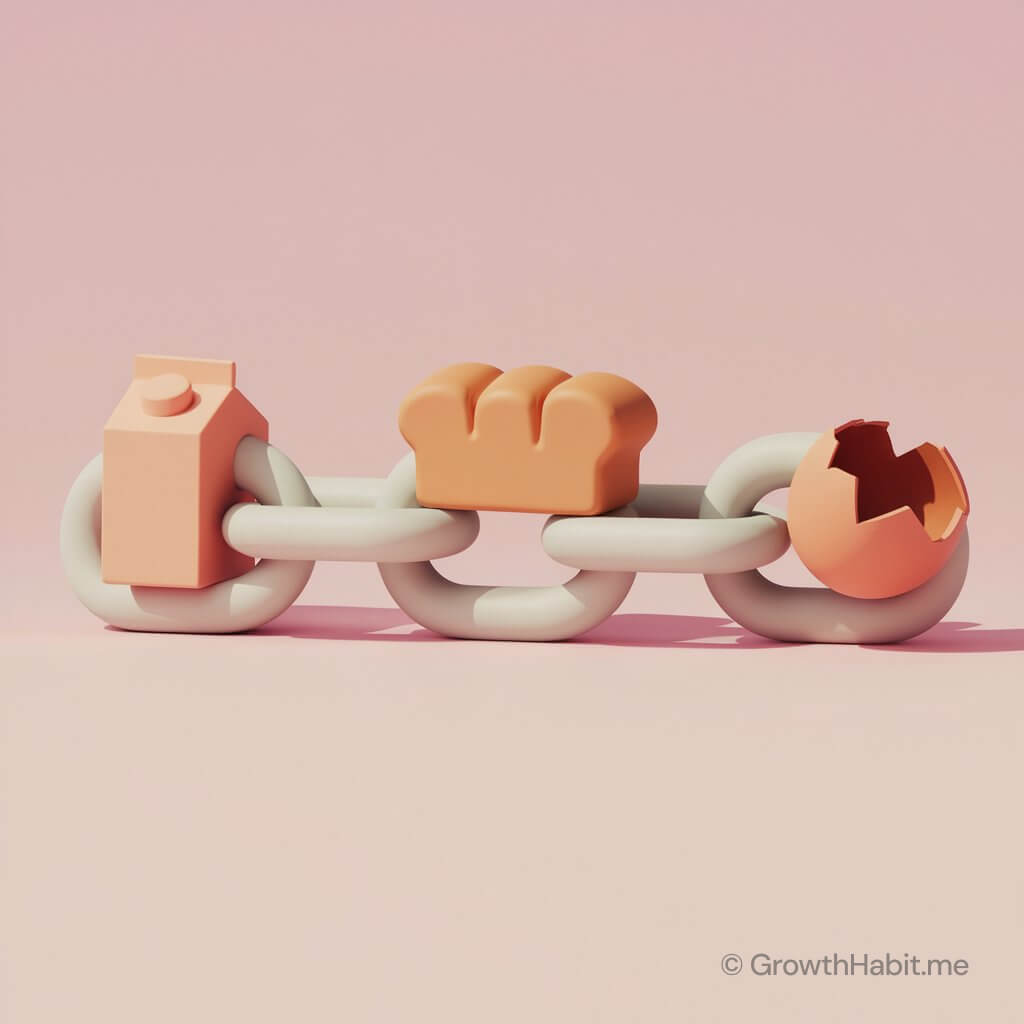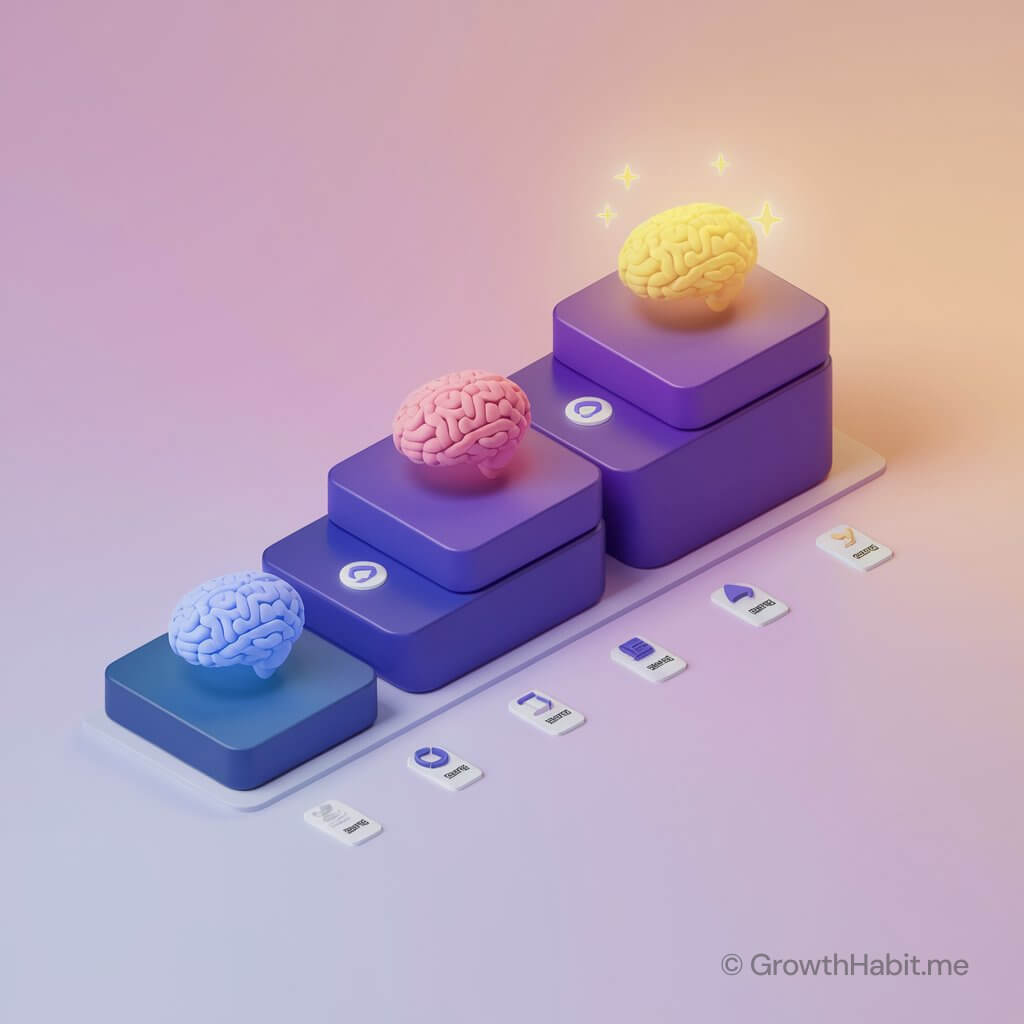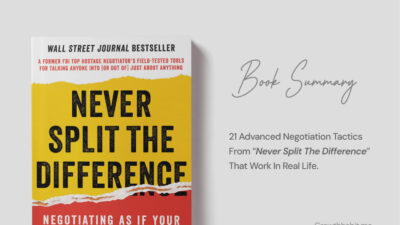When I first picked up Joshua Foer’s “Moonwalking with Einstein,” I was skeptical. Here was a guy claiming he went from having an average memory to becoming a U.S. Memory Champion in just one year. But as I dove into the techniques he described and started practicing them myself, something remarkable happened: my ability to learn and remember transformed completely.
In this article, I’ll share the most powerful memory techniques I learned from the book, explained in simple, practical terms that you can start using today. These aren’t just party tricks – they’re tools that can help you learn anything more effectively, from foreign languages to scientific concepts.
Why Traditional Learning Methods Often Fail Us
Before we dive into the techniques, let’s talk about why most of us struggle with memory in the first place. Think about how you learned in school: probably through repetition, highlighting text, and rereading notes. Research shows these methods aren’t very effective. Our brains aren’t designed to remember abstract information or random facts – they’re built to remember experiences, stories, and vivid imagery.
This is where Foer’s techniques come in. They work because they transform boring information into memorable experiences our brains naturally want to hold onto. Let’s explore these twelve techniques that changed my learning forever.
1. The Memory Palace Technique
This is the foundation of all advanced memory techniques, and it’s simpler than you might think. Imagine your childhood home. You can probably remember exactly where everything was – the layout of your bedroom, the spot where you ate breakfast, the path to the bathroom. This is because our spatial memory is incredibly powerful.

To use this technique, choose a familiar place (like your home) and create a specific route through it. When you need to remember a list of items or concepts, place vivid images representing each item along that route. For example, if you’re learning the planets in order, you might imagine Mercury as a giant thermometer in your entryway (because it’s the hottest), Venus as a beautiful goddess in your living room, and Earth as a globe spinning in your kitchen.
When producing content for platforms like Revision, it’s essential to focus not only on the quality of the writing but also on how it fosters engagement
2. The Person-Action-Object (PAO) System
This technique might seem complex at first, but it’s incredibly powerful once you get the hang of it. For each number from 0-9, assign a person, an action, and an object. For example:
- 0 might be Michael Jordan (person) dunking (action) a basketball (object)
- 1 might be Einstein (person) writing (action) on a chalkboard (object)
When you need to remember numbers, combine these elements in creative ways. For instance, to remember 01, you might picture Michael Jordan writing on Einstein’s chalkboard. This system allows you to convert abstract numbers into vivid, memorable stories.
3. The Major System
This is a way to convert numbers into consonant sounds, which you can then turn into words. Each number corresponds to a specific sound:
- 0 = s, z
- 1 = t, d
- 2 = n
- 3 = m
- 4 = r
- 5 = l
- 6 = j, ch, sh
- 7 = k, g
- 8 = f, v
- 9 = p, b
For example, 314 could become “mirror” (m-r-r). This system helps you remember numbers by turning them into meaningful words.motional connection with the content.
4. The Link Method
The Link Method is a powerful memory technique that transforms abstract information into vivid, connected mental images. Instead of trying to remember items separately, you create dramatic scenes where each item naturally flows into the next, like links in a chain.

Here’s how it works: Start with clear images of what you need to remember. Let’s say you’re remembering a grocery list: milk, bread, and eggs. Picture a giant milk carton flooding your kitchen. The milk waves are carrying loaves of bread like surfboards. These bread surfboards crash into a massive egg, cracking it open dramatically.
The key is making these connections active and outrageous – the more unusual, the more memorable. Your brain naturally remembers stories and connections better than isolated facts. With practice, you’ll find yourself automatically creating these mental chains, making memorization feel effortless rather than like a chore.
Remember: make your connections vivid, personal, and energetic. Static images are harder to remember than dynamic scenes.
5. The Substitute Word Method
The Substitute Word Method transforms difficult-to-remember words into memorable, often humorous substitutes that sound similar to the original word. Think of it as creating a mental “bridge” between what you know and what you’re trying to learn.
Here’s how it works: Break down an unfamiliar word into parts that sound like familiar words, even if they’re unrelated in meaning. For example, the chemistry term “hydrophobic” becomes “hide-row-phobic” – picture someone hiding in a row of seats because they’re phobic of water. For “photosynthesis,” imagine a “photo of sin thesis” – maybe a camera taking pictures of a student’s stolen thesis paper.
The key is creating vivid mental images that stick. When learning Spanish, “biblioteca” (library) might become “bike-lee-oh-tech” – picture a bicycle loaded with tech books. The substitutes don’t need to make sense; they just need to trigger your memory of the original word.
The trick is practicing these associations immediately. Say both the substitute and actual word several times while visualizing your mental image. Soon, hearing or seeing one will automatically recall the other.
6. The Story Method
Think about how easily you remember gossip or funny stories from your friends. That’s because our brains love stories way more than boring lists or facts. The Story Method uses this to help you remember things better.
Here’s how it works: Instead of trying to memorize a bunch of separate things, you turn them into a funny story. The crazier and more ridiculous, the better!
Let me show you with a simple example. Say you need to remember to buy milk, eggs, bread, and coffee at the store. Instead of just listing these in your head, make up a silly story:
“I walked into my kitchen and saw a cow doing jumping jacks (milk). The cow jumped so high it hit the ceiling fan, which started shooting eggs everywhere! I tried to catch the eggs with pieces of bread like a baseball mitt. The chaos woke up my pet coffee bean, who was sleeping on the counter.”
See how that’s way more fun than just “milk, eggs, bread, coffee”? Your brain will actually want to remember it because it’s entertaining.
The best part? You don’t need to be a great storyteller. The worse and weirder your story is, the better it works. Just make sure each thing you need to remember does something active in the story – don’t just list them.
7. The Roman Room Technique
The Roman Room Technique uses your brain’s natural ability to remember familiar spaces. Think about how easily you can picture your bedroom – where the bed sits, where your clothes are, even small details like pictures on the wall. This technique turns that spatial memory into a powerful tool for remembering anything.

Here’s how it works: Pick a room you know really well, like your living room. Now imagine placing items you want to remember in different spots around this room. Make these placements weird and memorable. Need to remember a grocery list? Picture milk flooding from your TV, eggs bouncing on your couch, and bread dancing on your coffee table.
When you need to recall the information, just take a mental walk through your room. Each location triggers the memory of what you placed there. The key is making the scenes vivid and strange – the more unusual, the better you’ll remember them.
8. The Chunking Method
Think of the Chunking Method like breaking a big chocolate bar into smaller pieces – it’s much easier to eat that way! Instead of trying to remember one long string of information, you break it into smaller, meaningful groups.
Here’s a simple example: Remembering a phone number like 8435921460 is tough. But if you break it into chunks like 843-592-1460, suddenly it’s much easier. Your brain can handle these smaller pieces better, just like taking smaller bites of food.
You can use this for anything. Learning a new address? Break it into house number, street name, and city. Studying history dates? Group them by decades or events. Even grocery lists become easier when you chunk items by category – dairy, fruits, cleaning supplies.
The secret is making each chunk meaningful to you. Maybe 843 reminds you of when you wake up (8:43), or 592 looks like your locker number. These personal connections make the chunks stick in your memory better.
9. The Mind Mapping Technique
Think of Mind Mapping like drawing a family tree for your ideas. Instead of writing boring lists, you start with one main idea in the middle of a page – like the trunk of a tree – and then branch out with connected thoughts, just like branches growing from that trunk.

Let’s say you’re planning a birthday party. Write “Birthday Party” in the middle of your page. Now draw branches coming out for all the main things you need: food, guests, decorations, and activities. From each of these branches, draw smaller branches for specific details. Under “food,” you might have branches for “cake,” “snacks,” and “drinks.”
It works because this is how our brains naturally think – not in straight lines, but in connections. When you see everything spread out like this, with colorful branches connecting related ideas, it’s much easier to remember and understand than a regular list. Plus, drawing these connections helps you spot new ideas you might have missed.
10. The First Letter Method
The First Letter Method, a fascinating memory technique that transforms complex lists into memorable phrases. This method leverages our brain’s natural ability to remember meaningful patterns and acronyms.
Think of how you might remember the colors of the rainbow with “Roy G. Biv” – each letter stands for a color: Red, Orange, Yellow, Green, Blue, Indigo, Violet.
Here’s how you use it: Take the first letter of each word or thing you need to remember. Then make up a funny or memorable sentence where each word starts with those letters. Need to remember the planets? “My Very Excited Mother Just Served Us Nachos” – Mercury, Venus, Earth, Mars, Jupiter, Saturn, Uranus, Neptune.
The trick is making your sentence silly or meaningful to you. The funnier or more personal it is, the better you’ll remember it. And don’t worry about being creative – even simple sentences work great as long as they mean something to you. Just make sure your sentence tells a little story that sticks in your mind.
11. The Category Method
The Category Method, is a powerful way to organize information in your mind for better recall.
Let’s say you have a long shopping list. Instead of trying to remember everything in random order, you group items into categories that make sense: dairy stuff (milk, cheese, yogurt), fruits (apples, bananas, oranges), and cleaning supplies (soap, sponges, detergent). Your brain finds it much easier to remember three categories with a few items each than fifteen separate things.
Think of it like organizing your phone contacts. You might have groups for family, work friends, and school friends. When you need to find someone, you first think of their group, then find them inside it. Same idea with memory – first remember the category, then the specific items become easier to recall.
The key is using categories that make sense to you. The better your groups connect in your mind, the easier it’ll be to remember everything.
12. The Review System
The review System helps Building Strong Memories Step by Step. Think about how you learn to play a new video game. The first time you play, you’re just getting familiar with the controls. The second time, you start understanding the strategy. After a few more plays, you become really good at it. That’s exactly how our memory works with the Review System!

Here’s your memory workout plan: First, review what you learned within an hour – just a quick check. Before bed that same day, try recalling the main points. The next day, test yourself on the details. Come back to it after three days, then a week, and finally after two weeks.
The key? Don’t just read over stuff passively. Challenge yourself to recall information before checking if you’re right. It’s like playing that video game on harder levels each time – you’re building up your memory strength.
Each review adds another layer of strength to your memories, like adding coats of paint to make the color last longer. Space these reviews out, and you’ll be amazed at how much better you remember things!




This article is exactly what I needed! Your insights are incredibly helpful.
I’m happy to hear you find value in my content. Thanks for your continued support!
You’ve changed the way I think about this topic. I appreciate your unique perspective.